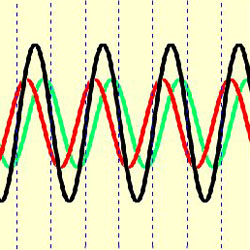Have you ever had your hearing tested? I’m talking about when you hear something and wonder what in the world is that noise?
The band looks at you. The people in the room look at you. It’s like nothing you’ve ever heard. Welcome to a standing wave.
Working a recent event, this very phenomenon happened to me. The drummer hit his toms and there, floating in the air, was a very very odd sound.
The sound was something akin to an echo but it wasn’t. In fact, it seemed the sound level should have degraded faster than it actually did. Standing waves are weird!
What are Standing Waves?
A standing wave is the result of a sound wave that bounces between two or more surfaces and emphasizes one specific frequency that you hear as the waves reinforce each other.
When the wave bounces off the surface, it changes phase. In the case of waves that create a standing wave, the reflected wave is a mirror image of the original.
The waves then combine. If the amplitudes of the two waves have the same sign (both positive / both negative), they will add together to form a wave with a larger amplitude. This adding together is called constructive interference. This added wave doesn’t appear to move, thus it’s called a standing wave.
This image shows the blue and red waves moving back and forth with the resulting black standing wave being produced.

Standing waves are usually low frequency waves below 300 Hz. Above 300hz, the waves tend not to reflect directly back and the sound is greatly influenced by the objects in the room and the composite of the room’s walls, floor, and ceiling.
Here’s a chart to give you an idea of the size of wavelengths based on the frequency. As you can see, the lower the frequency, the larger the wavelength such as a 20 foot distance from crest to crest.
















